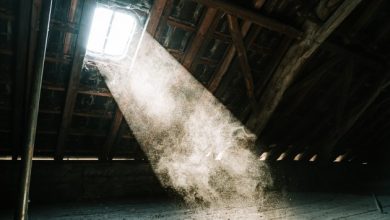
H.H.Munro’s “Sredni Vashtar”, first published in his collection The Chronicles of Clovis (1912), is a short story, presumably set in the early years of the twentieth century, that chronicles the claustrophobic life of a ten-year-old boy Conradin under his guardian and cousin Mrs De Ropp. The events in the story are fast-paced and the readers witness a drastic change in the lives of the characters culminating in death. With a streak of horror and vengeance, Saki (Munro’s pen name) attempts to create a fictional narrative that examines a child’s imaginative world in the nexus of middle-class morality, religion, and power.
Sredni Vashtar | Summary
Conradin, a young boy of ten, is diagnosed with a terminal condition by a doctor who his guardian Mrs De Ropp trusts the most. She happens to be the boy’s cousin as well. However, Conradin does not harbour any feelings of gratitude and affection for his cousin. She is an embodiment of middle-class morality who visits Church every Sunday and coerces Conradin to do the same. Her strict regiment at home leads him to isolate and distance himself from the real world. Mrs De Ropp’s subconscious pleasure in depriving Conradin of the freedom of his will drives him to develop strong feelings against her. As a getaway moment, Conradin happens to discover an abandoned tool shed in the garden that serves as an alternate world for him in the future course of the story. He builds figures from history and also as inventions of his mind to entertain himself in his little world of imagination. However, along with his fantasy-oriented dummies, there are two creatures in “flesh and blood” as well. They are a “Houdan hen” and a “large polecat ferret”.
In no time, Conradin develops a pagan attitude towards the ferret and starts worshipping it. He names it Sredni Vashtar and develops his own religion comprising ritualistic offerings and celebration of any evil force harming his cousin. His frequent visits to the tool shed spark suspicion and Mrs De Ropp interrogates him about his affairs. Since the shrine of the ferret is built in the deep recesses of the shed, Mrs De Ropp could only find the hen who she sells off for one night. Conradin is a silent witness to this intervention and he resorts to chanting a hymn to his ferret God. He wishes it to grant him a boon which is not revealed. His prayers continue every day and when his cousin notices Conradin’s frequent visits again to the shed, she decides to end the matter at once. She not only ransacks his room to find the key to his shed but also invades his privacy. Conradin is afraid of the revelation and its consequences. He envisions his cousin’s triumph over his life once again which will bring him back to a life he does not want to live. But the plot twist shocks him as he watches through his window the blood-bathed ferret walking out of the shed to drink some water from a small brook and running into the bushes. It is a divine spectacle for him that announces the unseen and unheard death of his cousin. Conradin gets back to the house and sinisterly eats a toast with lots of butter while listening to the cries and screams of the housemaids when they discover the body of their mistress. His composure displays his unsaid wish to the ferret God and his now achieved freedom.
Sredni Vashtar | Analysis
“Sredni Vashtar” is an overwhelming narrative that bears drastic events in quick succession shedding light on many relevant themes. With a third-person omniscient narrator and a dark tone of narration that constantly hints about an impending evil act, the story has a sinister quality to it. It subtly satirizes Christianity as a religion through the forced Sunday visits to church by the protagonist Conradin with his guardian Mrs. De Ropp. This insistence to attend the Church and, in a way follow Christianity, mirrors the actions of Christian missionaries during the colonial expansion. This line of argument can be backed up by considering the period of the text’s conception as the early twentieth century was still a period of colonialism. Conradin’s pagan activities stand in stark contrast to his church visits. He pursues everything that Christianity disapproves of. Idol worship, sacred offerings, cult formation and attracting evil forces on one’s enemy are a few practices that Conradin indulges himself in.
Religion is about faith and acquiring solace and so the author attempts to take a stand by justifying Conradin’s inclination towards a ferret as the God. The world that he inhabits has taken away all sources of happiness that a child should otherwise possess. He neither has any parents nor any friends with whom he can share his pain with. His cousin is synonymous with a ruler of a prison who has chained him into his room. The miserable life impels him to build an alternate world that inhabits animals as his companions. There is nothing unacceptable in his actions because there is no one to guide him. However, believing circumstantial occurrences like his cousin’s toothache or her death even; as a doing of the ferret, God takes his faith to an extremity. But then every religion in the world calls for a degree of blind faith. So placing Conradin’s faith into the binaries of black and white is a complex debate.
Not only religion but also the English society in its general mannerism is a subject of mockery by the author. Their lifestyle consists of discipline, morality, a strict class divide and joyless activities. Mrs. De Ropp embodies middle-class morality with her regular Church visits and a strict outlook on a child’s upbringing. She deprives Conradin of not only motherly love but his childhood. Preventing him from engaging in fun activities instigates Conradin’s vindictive nature to go against her and annoy her at every available opportunity. It can be observed that Conradin’s developing vengeful behaviour is actually the doing of his own guardian.
The story also interestingly plays with mystery and death. The readers are tricked to believe Conradin’s approaching death due to his terminal illness in the starting lines of the story when it is actually Mrs. De Ropp who dies at the end. There is a lack of knowledge one experiences during various incidents, allowing this piece to release a breath of mystery. For instance, the boon Conradin wishes to the ferret is unknown and the details of events in the shed when Mrs. De Ropp enters are kept under wraps. The events of Mrs. De Ropp’s death are reduced to the background noise amidst which Conradin in a spirit of celebration eats his buttered toast.
Imagination holds great significance in the story and the title contributes to it. “Sredni Vashtar” can stand for anything and the reasons for the author’s choice are still unknown. Since the name is given to a God-like figure, it signifies personal religion which does not require codes of conduct or meanings of names to be precise. One is at his/her disposal to practice whatever he/she believes in. However, if an attempt is made to decipher the meaning of the title, the word “Sredni” can be assumed to have its link with the word ‘shed’ where the God is actually formed in the story and “Vashtar” sounds rhythmic to ‘avtar’, which in Hindu mythology stands for personification of an idea or hope. Thus, Conradin’s hope to be free from the clutches of his guardian is embodied in the ferret whom he worships wholeheartedly in his imaginative world.
Sredni Vashtar | Themes
Religion
The story reflects two religions distinctly practised by two people who belong to different generations as well as gender. The young boy Conradin, who is coerced to follow Christianity by his guardian Mrs De Ropp, does not believe in Church visits as it is “an alien rite in the House of Rimmon.” It was not the Christian principles that stand in opposition to Conradin’s beliefs, but he dislikes and maintains a distance from anything that his cousin indulges herself in. He is more attracted to the idol-worship scenario where he treats a ferret in his tool shed as his personal God.
Religion is all about faith and one is capable and free to place his/her faith in anything and anyone. Though Conradin’s belief in the ferret to be a God having supernatural elements is not wrong, it is slightly misplaced. His belief is an outcome of the loneliness that he feels under the conditional living of Mrs. De Ropp. Offering fruits and flowers to the ferret in hope of his wish fulfilment directs Conradin to a sinister path shaded with vengeance and thirst for blood.
Mrs. De Ropp’s death towards the end of the narrative reinstates Conradin’s fading belief in the power of the ferret God. But if analysed, the ferret is an animal and as an inherent trait, it is bound to attack a human who poses a danger. It has never attacked Conradin because he offered it nutmeg as a religious offering. Though this line of argument is rational enough to dispel the belief that Conradin develops over time, it cannot be overruled that he is just a boy of ten years who is forced to live with an unlikeable person depriving him of his childhood.
Imagination
Our mind is capable of creating unimaginable worlds through the power of thought and reflection. When one seeks an escape, dreams offer an alternate space of action. However, the protagonist of the story materialises in his imagined space. He constructs a world in a tool shed that has creatures, both living and imagined, of his choice. He is at his best when spending time in his little heaven. Conradin’s disillusionment with the real world is a reaction to his cousin’s lifeless routines that are forced upon the young boy. Assuming him to be an orphan, one can only imagine how it is to live without parents at an age that commands love and care the most. Mrs De Ropp is to be blamed for his mental disassociation because she does not attempt or put in an effort to spend time with the boy or play with him. She is just fulfilling her duty as a guardian by providing him meals, medicines and a place to sleep. A child expects more. Conradin’s drifting apart from reality echoes in his thoughts: “… and in his eyes, she [Mrs. De Ropp] represented those three-fifths of the world that are necessary and disagreeable and real; the other two-fifths in perpetual antagonism to the foregoing were summed up in himself and his imagination.” People like Mrs. De Ropp are full of pretence and affectation. They like to control lives and such people corrupt a society which fails to accommodate innocent people like Conradin, as he exhibits this view by building up his world of imagination.
Matriarchy
The rule of a woman forms the crux of the story which is unlike the age it is written in. The early twentieth century did not see women’s rights or women in power. However, Saki attempts to offer an alternate world where a man, though a young boy in his case, is governed by the dictates of his guardian who happens to be a woman. As a guardian she fulfils her duty with utmost sincerity by providing the ill boy with his prescribed medicines on time, preventing him from engaging in any unscrupulous activity and compelling him to accompany her to church every Sunday. But she fails to provide the child with a childhood that is supposed to be filled with nurturance, love, spending time and befriending fellow kids. Mrs. De Ropp keeps him isolated in his room which cuts him from the rest of the world. She even interferes in his activities and searches his room to find the key to the shed after suspecting his visits. Without providing him with any chance to clear his stance, she simply sells off the hen, thus taking away the only companion he ever had.
The author throws light on the lack of difference between patriarchy and matriarchy. Both aim to control and dictate the lives of the other gender. Additionally, by killing Mrs. De Ropp towards the end of the story, the author rules out the space for a matriarch in society.
Sredni Vashtar | Characters
Conradin – A ten-year-old boy living under the guardianship of his cousin Mrs. De Ropp. His terminal condition coupled with his cousin’s strict demeanour compels him to distance himself from the real world. He is an imaginative boy who builds a little world of his own in a tool shed. This world also inhabits a religion personal to him that provides solace and respite from the overbearing nature of his guardian. He worships a ferret subsequently named Sredni Vashtar with utmost passion. However, over time, he develops a vengeful attitude towards his cousin due to her intervention in his affairs which ultimately results in her death. Conradin’s capability to foster vindictive and unforgiving feelings towards his tyrannical cousin at a young age speaks for his disturbed mind. Mrs. De Ropp’s end also marks the culmination of a strict and disciplined life that opens the gates to his freedom.
Mrs De Ropp- She is a guardian to Conradin, her cousin. Her salutation as ‘Mrs.’ reveals her married status though her husband is absent in the story. She is a matriarch who controls Conradin’s life in every way possible. His disciplined life contributes to his claustrophobic feelings against her, straining their relationship. She displays ignorance towards his will and backs up her strict behaviour with reasoning. Her failure to develop a mutual bond of love and respect with Conradin reflects her self-absorbed attitude that distances him every passing day. She becomes her cousin’s subject of vengeance as a consequence of her invasion of his privacy. The act of selling the hen who was a companion to Conradin in this otherwise lonely world marks her as an insensitive woman devoid of emotions. Her unnecessary interference digs up her own grave as she is killed by the ferret in the shed. While her death should have been devastating news to her cousin, on the contrary, it becomes the key to his freedom as he celebrates it with a buttered toast.
Doctor- An unnamed man who diagnoses Conradin with a serious condition that will lead to his untimely death. His reputation holds little value but Mrs De Ropp highly approves of him and his opinions.
Sredni Vashtar | Literary Devices
Irony – There are multiple instances of ironic situations in the story. To begin with, the opening lines of the narrative paint a picture of the doctor who diagnoses Conradin with a serious condition as a man whose opinions hold less value. But his reputation does not cloud any judgments of Mrs De Ropp who ironically endorses him. It can be argued that Conradin is possibly fit and no death threats loom over him. Instead, his guardian uses his supposedly impending death as an excuse to control his life.
Further in the story when Conradin is losing faith in his religion, in his opinion the ferret God chooses to grant him his wish i.e. freedom from his cousin. One’s wishes are usually fulfilled when he/she practices complete devotion and belief in his/her faith.
The climax shows Mrs. De Ropp dying from a brutal attack from the ferret which is ironic to the earlier prediction concerning Conradin’s future death.. It is a shocking turn to the preceding events but since the author commands our sympathy towards Conradin throughout the story, Mrs. De Ropp’s death serves as a resolution to Conradin’s trapped life.
Contrast – The juxtaposition of the doctor’s “silky” and “effete” nature with Mrs. De Ropp’s authoritative attitude draws a contrast between their gendered constrained roles. As a man, the doctor’s opinion should be regarded highly but the indication of his soft and effeminate composure grants him a reputation that bestows less value on his opinions. On the other hand, Mrs. De Ropp’s act of endorsing the doctor gives her a substantial edge over him in terms of power.
Another occurrence of contrast is observed in the description of the garden as “dull” and “cheerless” which attracted little attention to Conradin. Garden as space is popularly conceived to be colourful and joyful where life breathes. It provides solace and positivity to everyone. But Conradin’s life which is filled with rules and regulations does not allow him to view his garden in the same light.
Symbolism – Conradin’s various offerings to his ferret God comprise of “red flowers” and “scarlet berries”, both being red in colour and symbolising blood, fear, power and anger. By offering these flowers and fruits, Conradin signs off his destiny in blood. His sinister action adds an element of supernatural and evilness to his religious prayers that foreshadows a death in the course of the narrative.
Another example of symbolism is observed in the eating of a buttered toast towards the end of the story. Earlier when Conradin’s hen is sold off without his knowledge, he refuses to eat the toast offered by Mrs. De Ropp despite her rules that warn him against eating a toast. However, when she dies, Conradin eats toast with lots of butter to celebrate his faith as well as freedom. Thus, the toast becomes the symbol of his freedom.
Metaphor – The abandoned tool shed in the garden is looked up to as a “cathedral” by Conradin who builds his own shrine and religion while refusing to go to the Christian church. The shed acts as an alternate world where he finds peace and joy in the existence of his personal god who will free him from the tyrannical rule of his cousin one day.


